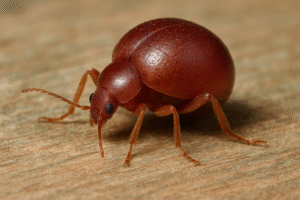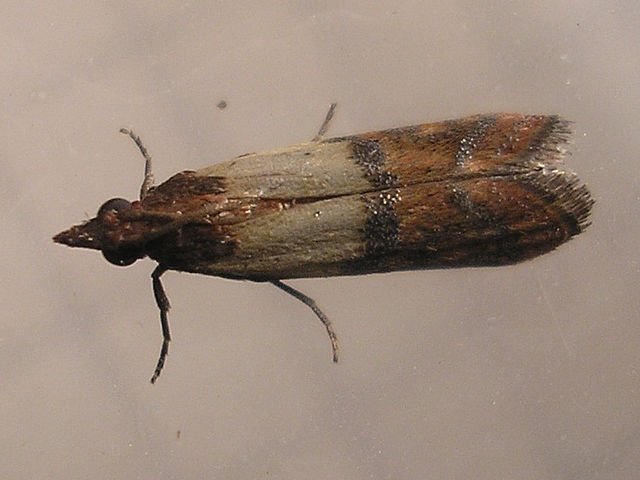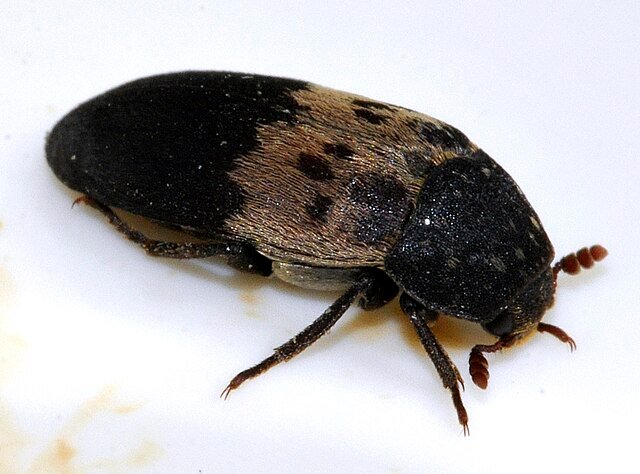Spider Beetles (Ptininae): Identification, Risks, and Control
Introduction
 Spider beetles may look like tiny spiders at first glance, but they are not arachnids. They are small beetles belonging to the subfamily Ptininae, known for their rounded bodies and long legs. These pests are common in stored food products, dark pantries, and even in bird nests. While not as well-known as cockroaches or silverfish, spider beetles can cause serious issues in homes, restaurants, and food storage facilities.
Spider beetles may look like tiny spiders at first glance, but they are not arachnids. They are small beetles belonging to the subfamily Ptininae, known for their rounded bodies and long legs. These pests are common in stored food products, dark pantries, and even in bird nests. While not as well-known as cockroaches or silverfish, spider beetles can cause serious issues in homes, restaurants, and food storage facilities.
Understanding spider beetles is important because they often go unnoticed until food contamination becomes obvious. This article explains how to identify them, their biology, the risks they bring, and the best ways to control infestations.
Identification
Spider beetles get their name because of their spider-like appearance.
Shape: round or oval bodies with long legs and antennae.
Size: small, usually 1.5–4 mm.
Color: reddish-brown to dark brown, sometimes almost black.
Appearance: hump-backed body with shiny surface. When they tuck in their heads, they look like tiny spiders.
Behavior: nocturnal, hiding in dark places during the day and active at night.
Common species include:
American spider beetle (Mezium americanum) – reddish-brown, rounded body.
Shiny spider beetle (Gibbium psylloides) – smooth, shiny, globular body.
Golden spider beetle (Niptus hololeucus) – yellow-brown with golden hairs.
Biology and Lifecycle
Eggs: laid in food products, cracks, or bird nests.
Larvae: white, worm-like, feed on organic matter including food crumbs, feathers, wool, or dried animal products.
Pupae: develop inside food debris or hidden crevices.
Adults: live several months, feeding and reproducing.
Spider beetles thrive in dark, undisturbed areas with access to food. They can survive in dry conditions, feeding on a wide variety of products.
Where They Are Found
Spider beetles are often found in:
Pantries and cupboards
Stored grains, flour, cereals, spices
Dried fruits and nuts
Animal products like wool, leather, feathers
Bird nests in attics or roofs
Abandoned buildings and warehouses
They are especially problematic in food storage facilities and museums, where they damage both food and natural history collections.
Risks and Problems
Spider beetles are not direct disease carriers like cockroaches, but they still cause serious issues:
Food contamination: infest stored food products, leaving droppings and shed skins.
Economic damage: infestations in warehouses or food processing facilities lead to waste and losses.
Museum pests: attack natural history specimens, wool, silk, and animal skins.
Nuisance factor: their spider-like look can cause alarm when found in homes.
Signs of Infestation
Tiny round beetles active at night.
Holes or web-like debris in stored products.
Shed skins and powdery food residues.
Unusual insect activity in pantries or near bird nests.
Control Methods
Sanitation
Inspect stored foods regularly.
Keep pantries dry and well-ventilated.
Remove old or expired products.
Clean food spills immediately.
Storage Practices
Use airtight containers for flour, cereals, and dried goods.
Store wool, silk, and leather properly in sealed containers.
Rotate stock in warehouses to prevent long-term storage infestations.
Exclusion and Prevention
Seal cracks and entry points where beetles can hide.
Remove bird nests near attics or roof spaces.
Reduce clutter in storage areas.
Treatment Options
Freeze infested items at –18 °C (0 °F) for several days to kill beetles and larvae.
Heat treatment above 50 °C (122 °F) can also work.
For severe infestations, professional pest control may use residual insecticides or fumigation in warehouses.
FAQ
Q: Why are they called spider beetles?
A: Because their round bodies and long legs make them resemble tiny spiders.
Q: Do spider beetles bite humans?
A: No, they do not bite or sting. They are nuisance pests, not direct threats to people.
Q: Can spider beetles spread disease?
A: They are not known to transmit diseases, but they contaminate food with droppings and shed skins.
Q: How do I get rid of spider beetles in my pantry?
A: Discard infested products, clean cupboards, and store foods in airtight containers.
Q: Where do spider beetles come from?
A: They often enter from bird nests, old furniture, or infested stored food.
Final Thoughts
Spider beetles are unusual pests that trick homeowners with their spider-like look. While harmless to people directly, they can contaminate food and damage stored goods. Early detection and good storage habits are the key to preventing infestations. In larger facilities, professional control is often required to protect both food products and valuable materials.
Read more in our blog and explore guides on many other enemies. Stay informed.
Learn more about other Stored Product Pests
Disclaimer
This article is for informational purposes only. Pest control laws and approved chemicals vary by country. For best results and legal safety, we strongly recommend contacting a licensed pest control professional in your local area. Always make sure that the pest control technician is properly certified or licensed, depending on your country’s regulations. It’s important to confirm that they only use approved products and apply them exactly as instructed on the product label. In most places in Europe, UK, or USA, following label directions is not just best practice—it’s the law.
Author
Nasos Iliopoulos
MSc Agronomist & Certified Pest Control Expert
Scientific Director, Advance Services (Athens, Greece)
Licensed Pest Control Business – Ministry of Rural Development & Food (GR)
References
Wikipedia – What is spider Beetles
- Penn state extension - Spider Beetles (ptininae)


